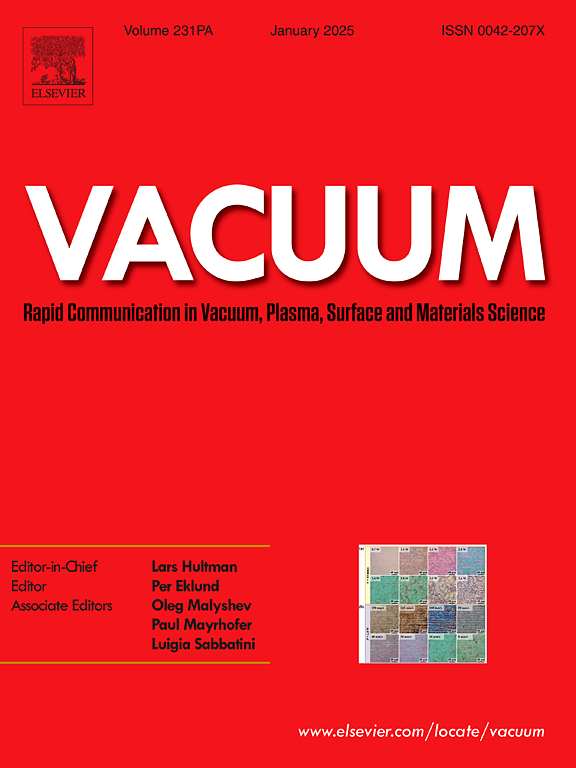Optimizing and well-Controlled Grayscale Electron Beam lithography for planar dual-blazed grating fabrication
IF 3.9
2区 材料科学
Q2 MATERIALS SCIENCE, MULTIDISCIPLINARY
引用次数: 0
Abstract
The blazed grating is a commonly used spectral component in spectroscopic imaging systems, but its operating bandwidth is limited by diffraction efficiency. Dual-blazed gratings, with varying blazed angles in different regions, offer a solution for wider bandwidth. However, fabricating such gratings faces the challenges in processing different angles and matching wavefronts. Grayscale electron beam lithography (g-EBL) presents a flexible method for manufacturing dual-blazed gratings with high efficiency and precise wavefronts compared to other techniques. Despite its advantages, the detailed process remains underdiscussed. This paper outlines a detailed g-EBL process for creating planar dual-blazed gratings. By optimizing grating layout and exposure doses, two blazed-angle gratings (1.8° and 3.5°) were accurately produced with consistent alignment in center height. The resulting dual-blazed grating exhibited 53 % average diffraction efficiency in 0.4–1.05 μm and less than 0.2 wv Peak-to-Valley wavefront aberration. This method establishes a universal approach for crafting dual-blazed gratings using g-EBL techniques.
平面双燃烧光栅灰度电子束光刻工艺的优化与控制
燃烧光栅是光谱成像系统中常用的光谱元件,但其工作带宽受衍射效率的限制。双燃烧光栅在不同区域具有不同的燃烧角度,为更宽的带宽提供了解决方案。然而,制作这种光栅面临着处理不同角度和匹配波前的挑战。与其他技术相比,灰度电子束光刻(g-EBL)提供了一种灵活的制造双火焰光栅的方法,具有高效率和精确的波前。尽管有其优点,但详细的过程仍未得到充分讨论。本文概述了创建平面双燃烧光栅的详细g-EBL过程。通过优化光栅布局和曝光剂量,可以精确地生成两个燃烧角光栅(1.8°和3.5°),且中心高度对齐一致。所得双燃烧光栅在0.4 ~ 1.05 μm范围内的平均衍射效率为53%,峰谷像差小于0.2 wv。这种方法建立了一种通用的方法来制作双燃烧光栅使用g-EBL技术。
本文章由计算机程序翻译,如有差异,请以英文原文为准。
求助全文
约1分钟内获得全文
求助全文
来源期刊

Vacuum
工程技术-材料科学:综合
CiteScore
6.80
自引率
17.50%
发文量
0
审稿时长
34 days
期刊介绍:
Vacuum is an international rapid publications journal with a focus on short communication. All papers are peer-reviewed, with the review process for short communication geared towards very fast turnaround times. The journal also published full research papers, thematic issues and selected papers from leading conferences.
A report in Vacuum should represent a major advance in an area that involves a controlled environment at pressures of one atmosphere or below.
The scope of the journal includes:
1. Vacuum; original developments in vacuum pumping and instrumentation, vacuum measurement, vacuum gas dynamics, gas-surface interactions, surface treatment for UHV applications and low outgassing, vacuum melting, sintering, and vacuum metrology. Technology and solutions for large-scale facilities (e.g., particle accelerators and fusion devices). New instrumentation ( e.g., detectors and electron microscopes).
2. Plasma science; advances in PVD, CVD, plasma-assisted CVD, ion sources, deposition processes and analysis.
3. Surface science; surface engineering, surface chemistry, surface analysis, crystal growth, ion-surface interactions and etching, nanometer-scale processing, surface modification.
4. Materials science; novel functional or structural materials. Metals, ceramics, and polymers. Experiments, simulations, and modelling for understanding structure-property relationships. Thin films and coatings. Nanostructures and ion implantation.
 求助内容:
求助内容: 应助结果提醒方式:
应助结果提醒方式:


